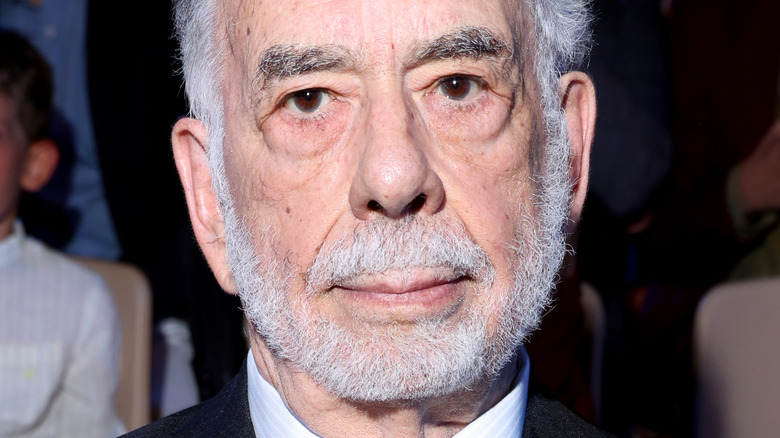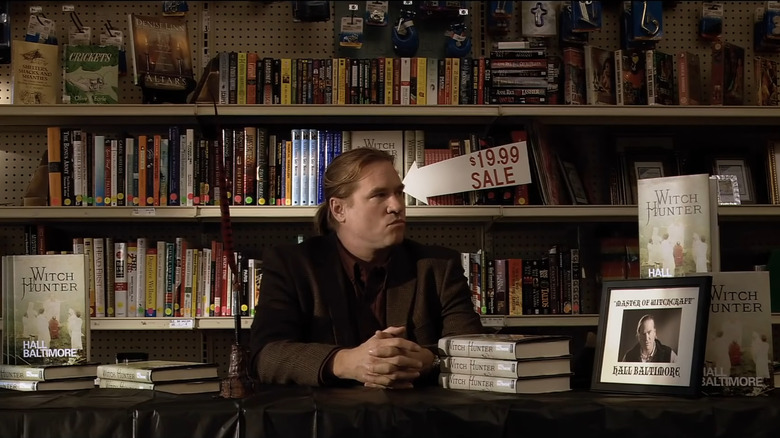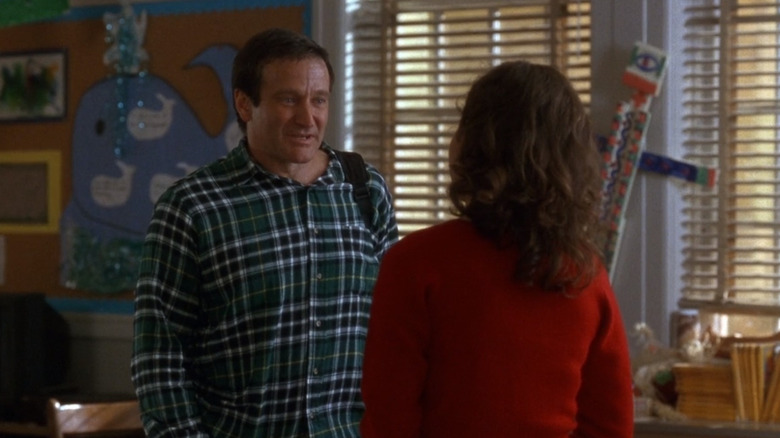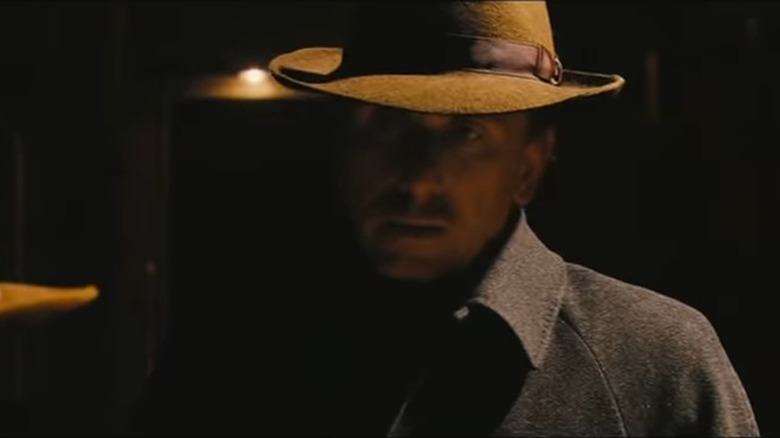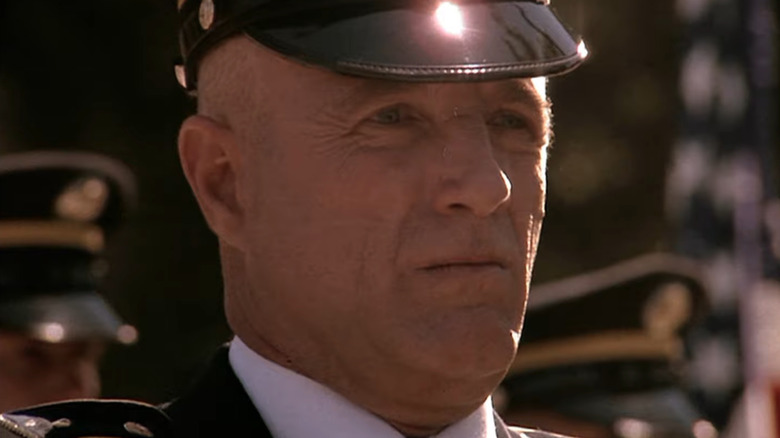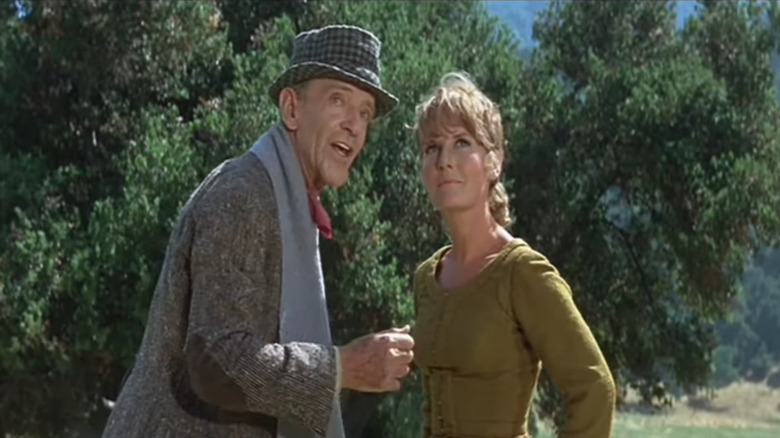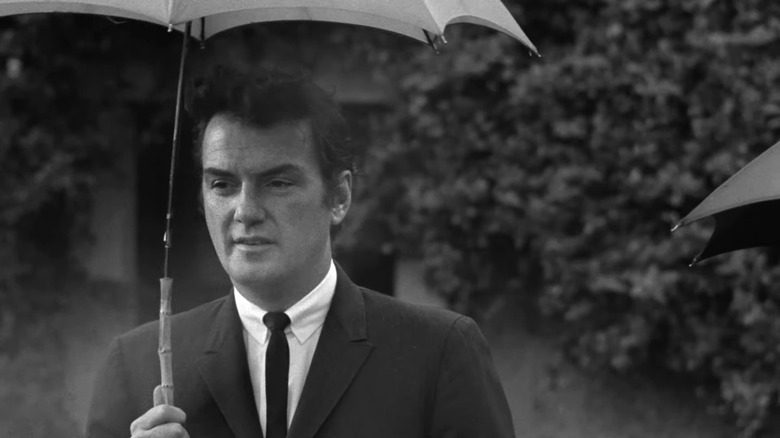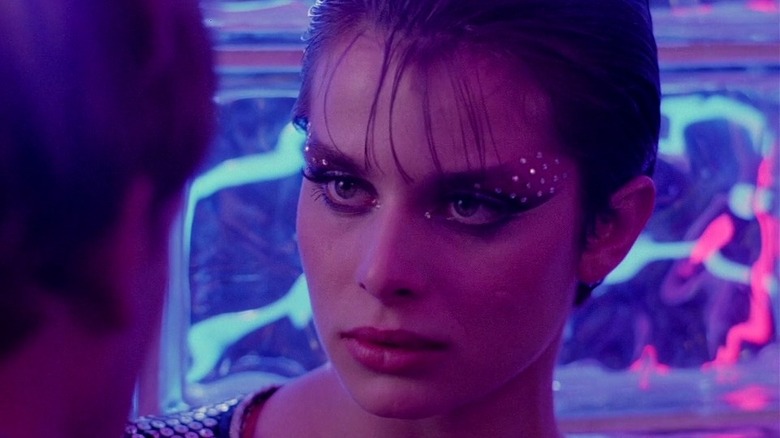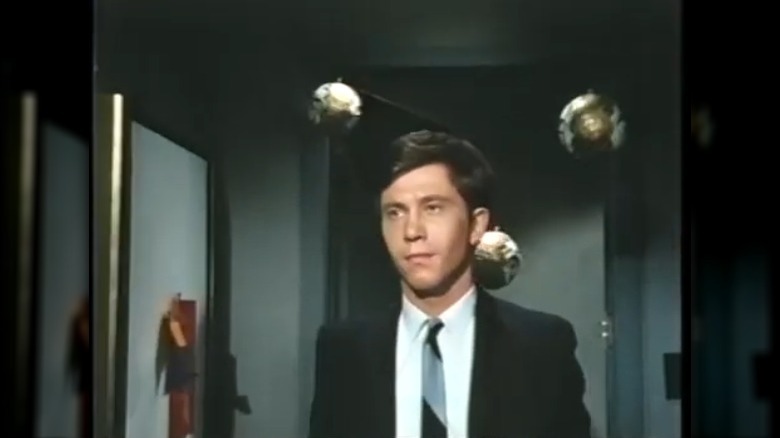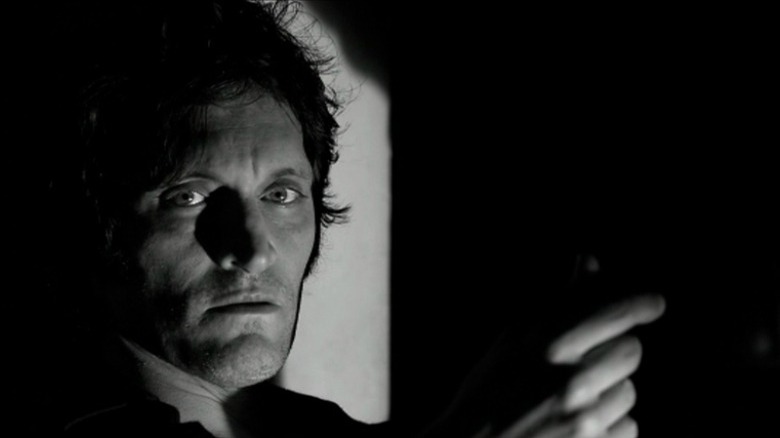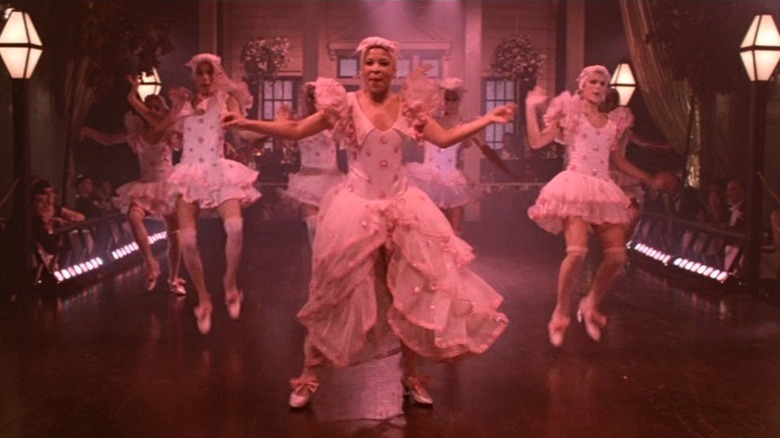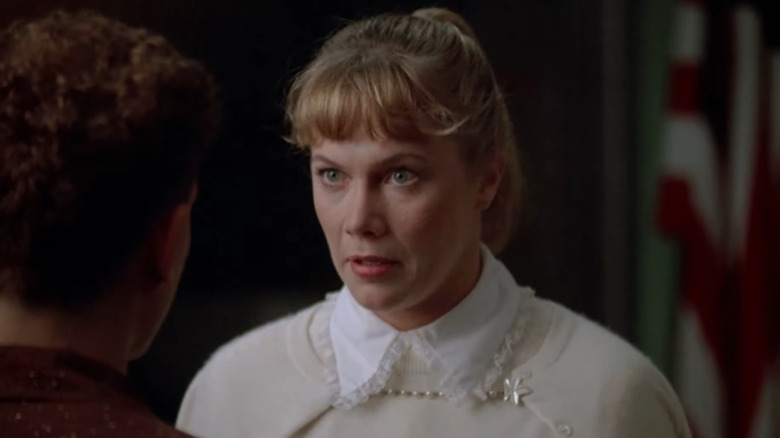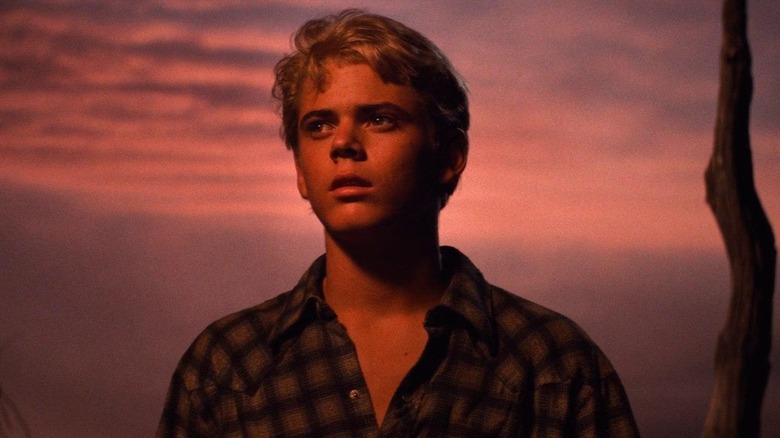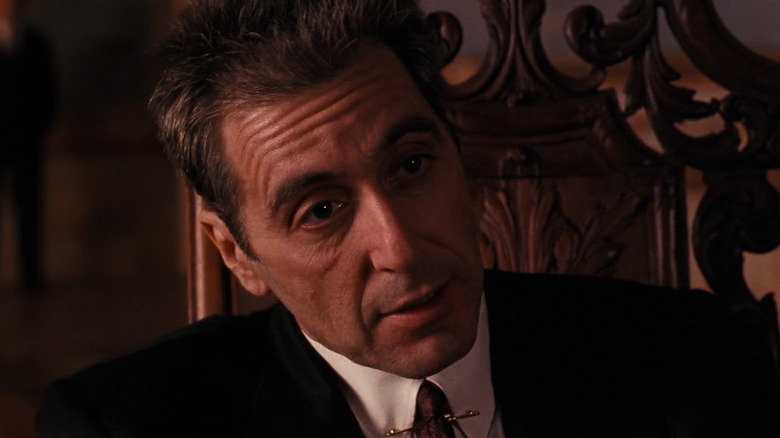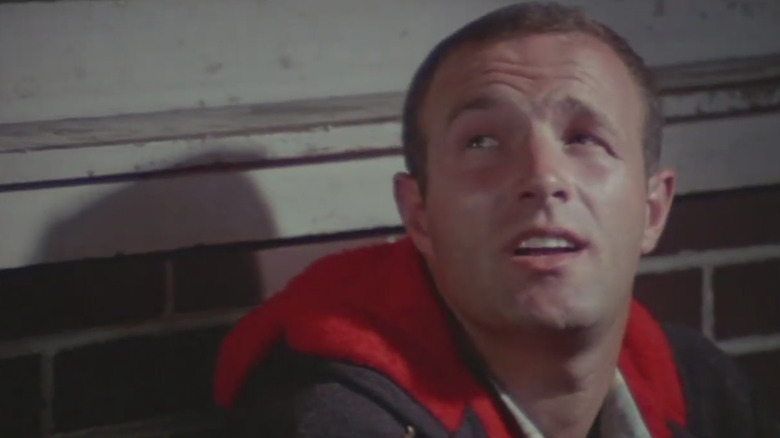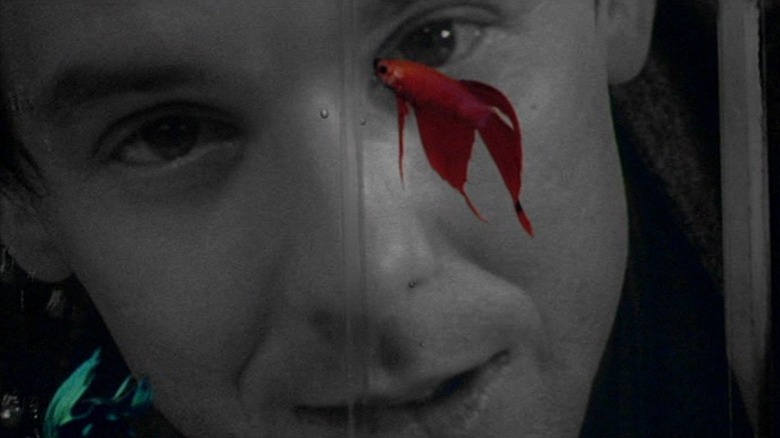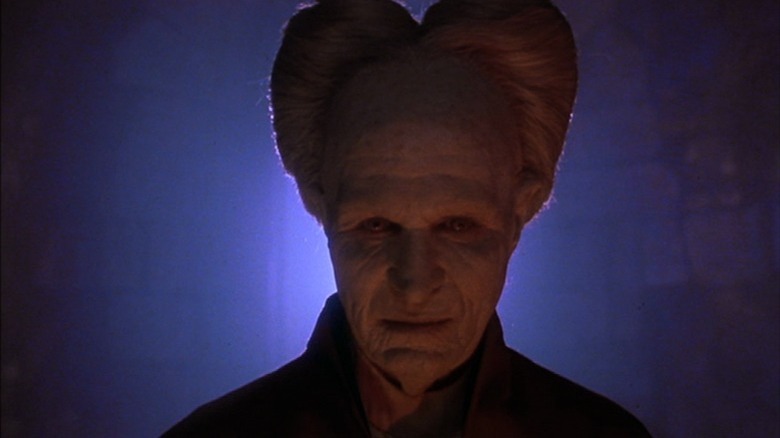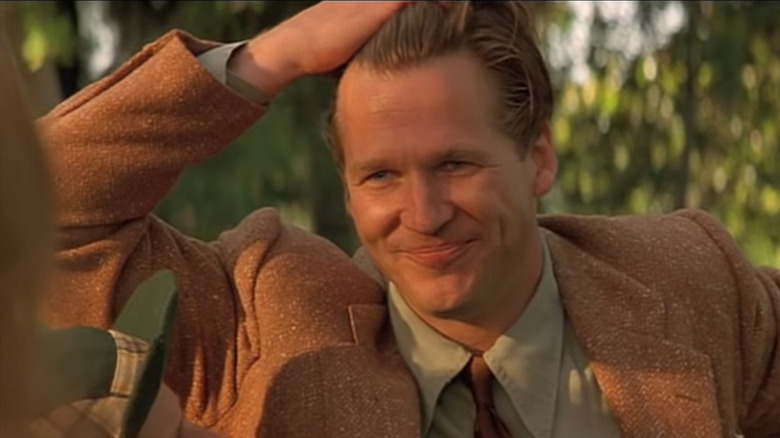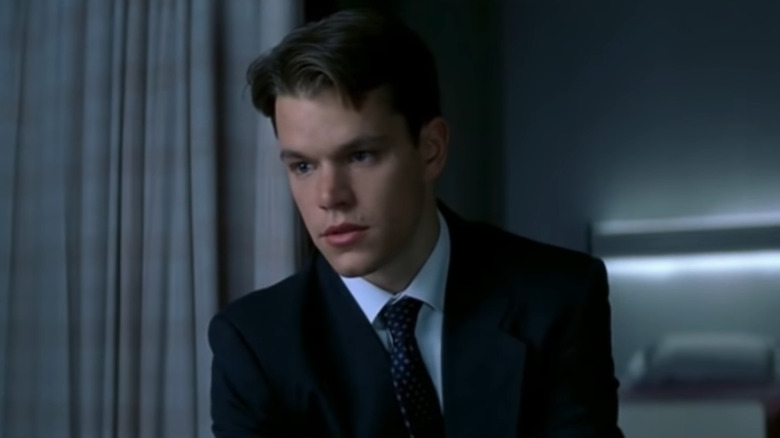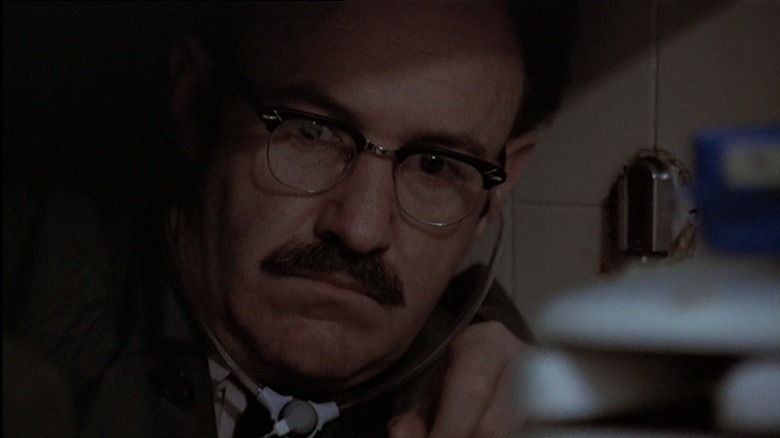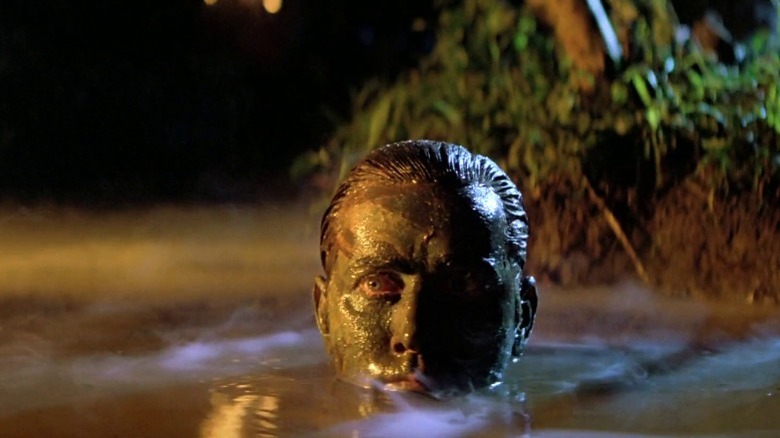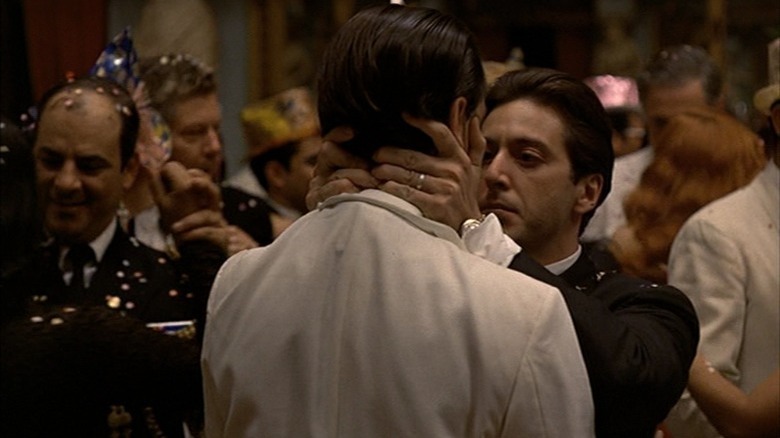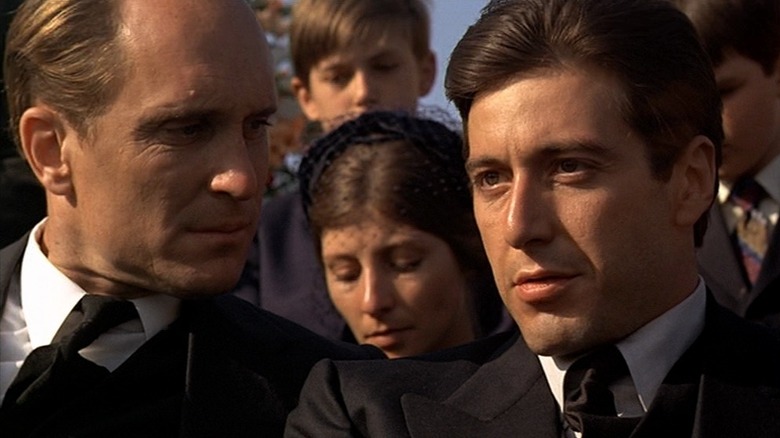Every Francis Ford Coppola Movie Ranked
The world is full of notable directors, but few have achieved the success and fame of Francis Ford Coppola. His work began in the 1960s, and by the following decade, many considered him one of the greatest directors of all time. His work is highly influential, as it's studied all over the world by prospective directors looking to follow in his footsteps. Coppola began directing in the early '60s after graduating from UCLA's film school, but it would be years before he became a household name.
In the beginning, he directed shorts and skin flicks to make ends meet, but he wasn't incredibly successful. He spent a couple of years editing shorts to combine them into new films, which kept the lights on and helped him network with more successful members of his profession. Eventually, he found his way into the employ of the Pope of Pop Cinema, Roger Corman, and this helped him land his first feature film directing gig in 1963.
From there, Coppola developed his style and created some of the most celebrated films of all time. Most people have seen the big names on his IMDb page, knowing all too well his success with "The Godfather" trilogy and several others. Coppola directed over 22 feature films throughout his career, depending on how you count his earliest credits, and may have one more passion project up his sleeve. Here are his movies ranked, using data from Rotten Tomatoes, IMDb, Metacritic, and Letterboxd, from the lowest rated film to the highest.
22. Twixt (2011)
As of mid-2022, "Twixt" is the last finished feature film Francis Ford Coppola released, and by most accounts, it's not a good one. The film stars Val Kilmer, Elle Fanning, Bruce Dern, Joanne Whalley, and Alden Ehrenreich in a horror set around a writer haunted by a ghost who finds himself in the midst of a murder mystery. The film was something of a return to form for Coppola, given his first foray into feature films under the low-budget big top of Roger Corman, but it's a far cry from the complex, sophisticated likes of "The Godfather."
"Twixt" premiered at the Toronto International Film Festival, and it wasn't treated kindly by critics. Kirk Honeycutt of The Hollywood Reporter wrote about the film's dream sequences, saying, "One can reflect on what the young Coppola, with his masterful camera work and vivid imagination, might have done with such an opportunity. Unfortunately, the present-day one produces only tepid and tired imagery that would not earn high marks in any film school."
Neither the cast nor the veteran filmmaker's zeal could make "Twixt" a success, and it was barely screened and made substantially less than it cost to produce. That said, the film was critically acclaimed upon its release in France, where it received much kinder mention by the nation's critics. Le Monde described the film as "A fragile beauty, poignant, totally romantic. 'Twixt' is a Gothic poem" (via Hypable). Despite love from France — and if you don't count his first Corman gigs and early editing jobs — "Twixt" remains Coppola's lowest-rated film on IMDb.
21. Jack (1996)
When Robin Williams is cast in a movie, it's almost guaranteed to be good. At the very least, his inimitable comedic energy can make a bad film good. That should have happened with "Jack," but unfortunately, while Williams may have had the right character and story, he lacked appropriate direction, and the film flopped with critics (it's Francis Ford Coppola's lowest-rated film on Rotten Tomatoes) as well as with audiences worldwide, barely recouping its budget.
"Jack" tells the story of a boy born with a rare form of progeria, which makes him age four times faster than normal. As a result, when Williams steps into frame, he's playing a 10-year-old boy in the body of a 40-year-old. That seems like something Williams could do well, and for the most part, he does his best. That said, Coppola's directing steers the picture away from the more comedic aspects of what "Jack" could be by attempting a coming-of-age drama, which doesn't work.
Roger Ebert of the Chicago Sun-Times didn't hold back in his one-and-a-half-star review of the film. He wrote, "Williams works hard at seeming to be a kid inside an adult body, and some of his inspirations work well. But he has been ill-served by a screenplay that isn't curious about what his life would really be like." Ultimately, the film didn't know which audience to cater to, as it could have been made for kids or adults, but never settled on one or the other, leaving the audience unfulfilled and wanting for entertainment where little exists.
20. Youth Without Youth (2007)
"Youth Without Youth" was Francis Ford Coppola's first film in a decade, having released "The Rainmaker" in 1997. The film stars Tim Roth, Alexandra Maria Lara, and Bruno Ganz in an adaptation of Mircea Eliade's novella of the same name. "Youth Without Youth" is a fantasy that explores the nature of humanity through Dominic (Roth), an educator on the verge of suicide when he's struck by lightning. Instead of killing him, he's rejuvenated and finds that he's developed psychic powers. As the film opens in 1938, he attracts the attention of the Nazis and flees to Switzerland.
In an interview about "Youth Without Youth," Coppola described the film as "A kind of changing tapestry of illusion." Critics weren't entirely unkind to Coppola for this film, though Ty Burr of The Boston Globe wrote, "'Youth Without Youth' is pretentious as hell but so goofily in love with the idea of itself that you feel protective toward it, the way you would toward a platypus that has lost its way." The film tends to muddy the waters in terms of tone and genre, confusing the audience unnecessarily. As a result, it's a bit unhinged for a Coppola film, and the movie wasn't the triumphant comeback the director might have been hoping for.
If you or anyone you know is having suicidal thoughts, please call the National Suicide Prevention Lifeline by dialing 988 or by calling 1-800-273-TALK (8255).
19. Gardens of Stone (1987)
Francis Ford Coppola's "Garden of Stone" is adapted from Nicholas Proffitt's novel of the same name. It features James Caan, James Earl Jones, Anjelica Huston, D.B. Sweeney, Dean Stockwell, and Mary Stuart Masterson in leading roles. The film's title is a reference to the gravestones at Arlington National Cemetery, where the story is set. Sergeant Hazard (Caan) is a grizzled Korean War veteran upset about his posting at the cemetery, as he'd prefer training troops for the Vietnam War.
When Private Willow (Sweeney) arrives at his unit, he and Sergeant Major Nelson (Jones) work to educate the young man about the dangers of war, knowing their instruction may not be enough to prepare Sweeney for the true horror of combat. Coppola has explored the horrors of warfare in numerous films, so this 1987 film was something of a return to form for the director after the mixed subjects of his post-"Apocalypse Now" projects. While the film addressed combat and warfare admirably, it leaves the audience wanting for more.
The film's depiction of a young man preparing for war and the aftermath of his deployment reflects the nature of war as it affects the individual. In this way, the movie respects the veteran's experience honorably. Despite this, "Gardens of Stone" wasn't critically acclaimed, nor did it make its money back, continuing the poor performance of Coppola's '80s and '90s projects.
18. Finian's Rainbow (1968)
Few people today would think of Francis Ford Coppola as a musical director, but early in his career, he directed "Finian's Rainbow," starring none other than Fred Astair. Based on the theatrical musical of the same name, "Finian's Rainbow" is centered around an Irish immigrant in the United States (Astaire). He and his daughter (Petula Clark) made it to the U.S. after stealing a leprechaun's (Tommy Steele) pot of gold, and they wind up conflicting with a U.S. Senator (Keenan Wynn).
While the premise is undoubtedly unusual and nothing like Coppola's typical fare, "Finian's Rainbow" is an arguably enchanting fantasy film. Unfortunately, the late-1960s wasn't a great time to release a movie musical, as their popularity was on the decline. The film is relatively long, clocking in at 145 minutes, with an intermission in the middle, yet the film far outscored its budget and earned nearly $12 million worldwide. It also earned two Academy Award nominations.
Roger Ebert was particularly kind to the film, calling it "A marvelous evening right up to its last shot of Astaire walking away down a country road." "Finian's Rainbow" otherwise has earned a mixed reception from modern critics, but if you're a fan of the genre, it's certainly worth your time.
17. Dementia 13 (1963)
After directing shorts and working as an editor, Francis Ford Coppola got the chance to direct his own feature film, "Dementia 13." The film is a black-and-white thriller starring William Campbell. "Dementia 13" is what most people think of when they hear the term "low-budget horror film" because it epitomizes that perfectly. Roger Corman gave Coppola $40,000 to make a cheap copy of "Homicidal," itself a rip-off of "Psycho," and Coppola's plot somewhat mirrors it. The film follows Louise (Luana Anders) working to secure her deceased husband's inheritance. She and others hold a memorial at the family estate, and there's some scheming going on, but it's all undermined by a psychotic axe murderer running rampant throughout the family gathering.
"Dementia 13" is a film beloved by professional film critics and loathed by audiences. While many critics call it entertaining and odd, it does have its charm. As an early Coppola picture, it establishes several filmmaking styles the director would later employ, and at under 75 minutes, depending on which cut you watch, it's worth watching (and is on YouTube for free). The film was remade in 2017 by Richard LeMay without Coppola's involvement. That adaptation didn't do incredibly well, but Coppola has since recut his original film for a 4K remaster, earning the film more notice and a crisper look. In his commentary for the director's cut, released in 2021, Coppola said of his original work, "I was so proud that I made something that vaguely looked like a movie."
16. One from the Heart (1982)
If you thought Francis Ford Coppola was finished with musicals when he wrapped "Finian's Rainbow," you clearly haven't seen "One from the Heart." This romantic drama fantasy musical stars Teri Garr and Frederic Forrest, flanked by Harry Dean Stanton, Nastassja Kinski, and Raul Julia in a Las Vegas-set story about two separated lovers.
"One from the Heart" is known to Coppola fans as his biggest financial flop. The film cost $26 million ($80 million in 2022) to produce and only made $636,796 ($2 million in 2022) at the domestic box office across 41 theaters. Coppola paid for large portions of the production, upping the studio budget considerably. This was a costly mistake for the director and sunk his financial situation for the next decade.
Coppola was in deep, owing co-producer Fred Roos for $71 million (per the Los Angeles Times). The director had to file for bankruptcy protection and reorganization of American Zoetrope, Coppola's production company. Despite the financial losses, "One from the Heart" was a modest critical success that fared well with audiences — the ones who saw it, at any rate. Its general critical reception has been mixed. Roger Ebert wrote that it was a more interesting production than it was a film.
15. You're a Big Boy Now (1966)
"You're a Big Boy Now" is Francis Ford Coppola's second directing endeavor, starring Elizabeth Hartman, Peter Kastner, Rip Torn, and Geraldine Page, who scored a Golden Globe and Oscar nomination for her performance. The film is an adaptation of David Benedictus' novel and was Coppola's thesis project for his Master's degree program at UCLA, and he wasn't well-paid for his work. Coppola was paid $8,000 to direct the film, which had a budget of a quarter million dollars.
In Gene D. Phillips' book, "Godfather: The Intimate Francis Ford Coppola," Coppola explains his fee, saying, "Why did I make "Big Boy" for just $8,000? I would have done it for nothing." The film was the first to bring Coppola to the Cannes Film Festival — surely one of the only times a thesis film played at Cannes and scored an Oscar nomination — and while Coppola didn't win any prizes in 1966, he'd later return and claim the Palme d'Or for two films further down the list.
"You're a Big Boy Now" did well with critics, and modern looks back at the movie have proved positive. Roger Ebert wrote, "Coppola has fun directing, and his film is filled with sight jokes, high-spirited performances and a lively [soundtrack] by the Lovin' Spoonful." The majority of critics now agree that Coppola's second film is a fun comedy by a then-up-and-coming director.
14. Tetro (2009)
Francis Ford Coppola followed up "Youth Without Youth" with "Tetro" two years later. Coppola came up with the idea of "Tetro" while directing his previous film, thanks to its shooting location in Buenos Aires, Argentina. "Tetro" was the director's first completely self-authored original screenplay since 1974's "The Conversation." Coppola told Deutsche Press-Argentur, "I knew Argentina has a great cultural, artistic, literary, musical, cinema tradition, and I like those kinds of atmospheres very much because you usually find creative people to work with" (via Film Review).
The movie is a film noir that follows Bennie (Alden Ehrenreich) as he travels to Argentina to find his estranged brother, Tetro (Vincent Gallo). When he arrives, he doesn't find the man he idolized growing up. Instead, he meets a man who is struggling with his self-destructive nature and doesn't want anything to do with Bennie, but the young man forces his way into Tetro's life by supporting his writing as he completes one of his plays and submits it to a competition.
While early buzz for "Tetro" wasn't stellar, critics have recognized it as an excellent film. "Tetro" got great reviews, but if you haven't heard of it, that's because nobody saw it — released in only 16 theaters domestically, the film barely broke half a million at the box office. (It fared better overseas.)
13. The Cotton Club (1984)
"The Cotton Club," based on a James Haskins novel, centers around the titular Harlem jazz club during the 1930s. The film took an exceptionally long time for Francis Ford Coppola to make. Production delays, budget overruns, and other issues stretched the making of the film out to five years. When it was finally released, the studio's interference with Coppola's vision resulted in a final cut that Vanity Fair described as "mutilated."
In the club, Richard Gere stars as Michael "Dixie" Dwyer, a musician who falls in love with the mafia-affiliated Vera (Diane Lane) and tries to keep his erratic brother (Nicolas Cage) out of trouble. Bob Hoskins and Fred Gwynne play the club owners, and Gregory and Maurice Hines play two tap-dancing wunderkind brothers hired by the club. Their "electrifying" dance sequences, which pay homage to Black dancers in classic Hollywood productions, are largely praised as the film's best elements. The original theatrical cut was a box office failure, likely due to the cuts forced upon Coppola that took screen time away from the Black characters.
Fortunately, Coppola got his hands on a Betamax copy of the original cut in 2015. He spent the next two years and $500,000 to restore his original vision. In 2017, he debuted "The Cotton Club: Encore" at the Telluride Film Festival. The director's cut proved superior to the original, and Peter Sobczynski of The Spool wrote, "The original theatrical version of 'The Cotton Club' was a mess, but it was never a boring mess. ... But 'Encore' is simply a better film, transforming a collection of moments into a strikingly concise whole."
12. Peggy Sue Got Married (1986)
When Francis Ford Coppola directed "Peggy Sue Got Married," it came at a time of particularly dire financial problems for the director. His production company was in financial distress over the poor showing of "The Cotton Club," and he needed a lifeline. Fortunately, Coppola was saved when his friend, Ray Stark, offered him $3 million to helm "Peggy Sue" after the first director, Penny Marshall, dropped out due to issues concerning the script.
The film stars Kathleen Turner in the titular role opposite Nicolas Cage (Coppola's nephew). The movie is a fantasy comedy about Peggy Sue on the verge of divorce when she goes to her high school reunion in 1985. She faints and awakens in 1960, and she's a teenager back in high school, able to live her life differently. The film was a critical and financial success, but it was incredibly difficult for everyone involved to make.
Coppola had to meet a set date or lose control over the final cut. This pushed the cast and crew to work day and night to make the film on time, stressing everyone out. Beyond that, according to Turner, Cage was impossible to work with. He was arrested twice for drunk driving during filming and evidently stole someone's dog. She wrote about it in her autobiography, "Send Yourself Roses," and Cage sued her over the story (via Huffington Post).
11. The Outsiders (1983)
Francis Ford Coppola's "The Outsiders" is based on S.E. Hinton's novel, and the filmmaker was inspired to make it after receiving a letter from a librarian and some students. The coming-of-age drama about a gang of greasers in a small Oklahoma town helped launch the new brat pack of the 1980s: Rob Lowe, C. Thomas Howell, Ralph Macchio, Emilio Estevez, Tom Cruise, Matt Dillon, Diane Lane, and Patrick Swayze.
"The Outsiders" became required viewing in high schools around the country, which makes sense, seeing as Hinton's novel was required reading since its release in 1967. One thing the film has done is age well, and it's since become a cult classic. When it was released, "The Outsiders" made nearly three times its budget, earning a win for Coppola and helping to launch the careers of the cast. Kevin Maher of The Sunday Times wrote, "It's beautifully shot, written, and paced, but the cast, really, is the thing."
10. The Godfather Part III (1990)
Of all the films Francis Ford Coppola has worked on over the years, "The Godfather" trilogy stands out as his best work. While that's certainly true of the first two films, the third has never been as well-received. The movie picks up the story of Michael Corleone (Al Pacino), head of the powerful Corleone family, years after the events of the second film. The primary storyline features Michael's attempt to legitimize the organization and the problems that arise from that venture.
While "The Godfather Part III" isn't as beloved as its predecessors, it is nonetheless an excellent film. Upon release, it was praised for Pacino's performance, while one of the most derided aspects of the film was Sofia Coppola's depiction of Mary Corleone, Michael and Kay Adams' (Diane Keaton) daughter. She's also the director's daughter and took the part when Winona Ryder had to back out at the last moment.
Cries of nepotism arose when Sofia's performance failed to impress critics. Additionally, Coppola was forced to edit a harrowing murder scene to keep the film from receiving an NC-17 rating upon release. "The Godfather Part III" was a box office disappointment, but it found more favor among critics, though not as much as the first two films. Andrew Sarris wrote that the trilogy's final chapter was "A worthy conclusion to the greatest American movie epic of the past two decades — and an underrated masterpiece in its own right."
9. The Rain People (1969)
Francis Ford Coppola made his fourth film, "The Rain People," with the help of his friend and fellow filmmaker George Lucas. The man who would go on to create "Star Wars" worked as an aide during production and went on to make a documentary, "Filmmaker: a Diary by George Lucas," about the making of "The Rain People." Coppola's film stars future "The Godfather" collaborators James Caan and Robert Duvall, as well as Shirley Knight and Tom Aldredge, in a drama about a woman's desperation after learning she's pregnant. She sets out on a cross-country road trip of self-discovery, where she picks up Jimmie (Caan), a hitchhiker with some brain damage. She later meets a cop (Duvall) and becomes involved in their lives. "The Rain People" is a feminist story released when such films were few and far between. It is also something of an experiment for Coppola, as he was developing his directing style throughout the late-1960s.
Coppola filmed "The Rain People" on a budget of $750,000 ($6 million in 2022) over a three-month period. It was shot entirely on-location and was edited en route. While it wasn't a huge financial success, the film got good reviews and has become a cult classic and an early example of Coppola's style. Tom Milne of Time Out called it "a fascinating early road movie made entirely on location with a minimal crew and a constantly evolving script."
8. Rumble Fish (1983)
Like "The Outsiders," the film Francis Ford Coppola made before "Rumble Fish," the film is based on an S.E. Hinton novel. The writer helped co-write the screenplay with Coppola during the filming of "The Outsiders," which he shot back-to-back with "Rumble Fish." The movie features several actors who've worked with Coppola before and since, including Matt Dillon, Vincent Spano, Mickey Rourke, Laurence Fishburne, Nicolas Cage, Diane Lane, Diana Scarwid, Tom Waits, and Dennis Hopper.
Like "The Outsiders," "Rumble Fish" is a coming-of-age drama about a group of young boys in a gang. Rusty (Dillon) is in dire need of a fight and spends his time hanging out with his girlfriend, Patty (Lane), and his friends Smokey (Cage), Midget (Fishburne), and B.J. (Christopher Penn). When his brother, Motorcycle Boy (Rourke), comes home, Rusty attempts to learn from him as he struggles with his own identity.
"Rumble Fish" wasn't a financial success upon release, and while fewer people saw it than they did "The Outsiders," it remains an excellent film. Roger Ebert praised the film, which got high marks from other critics and has since become the first Coppola film inducted into the Criterion Collection.
7. Bram Stoker's Dracula (1992)
Long before Francis Ford Coppola came onto the scene, Bram Stoker's classic novel, "Dracula," had been adapted into plays, television series, and films. While there have been many adaptations over the years, few have come as close to adapting the novel as well as Coppola's 1992 film, "Bram Stoker's Dracula." The director managed to outdo the campy characterizations of Dracula from the previous 40-plus years and remade him into what he initially was: an enigmatic creature of the night and one of fiction's greatest villains.
Gary Oldman plays the Count opposite Keanu Reeves' Jonathan Harker and Anthony Hopkins' Professor Van Helsing. Winona Ryder plays Mina, Jonathan's fiancée, whom Dracula attempts to claim, thinking she's the reincarnation of his immortal beloved. Richard E. Grant, Tom Waits, and Cary Elwes also star.
Upon release, the film was a critical and financial success, and many praised it for its set design, costumes, and direction. It was nominated for four technical awards at the 65th Academy Awards, winning for its costume design, sound effects editing, and makeup. Critics in general enjoyed the film, and Roger Ebert wrote, "Coppola directs with all the stops out, and the actors perform as if afraid they will not be audible in the other theaters of the multiplex. The sets are grand opera run riot — Gothic extravaganza intercut with the Victorian London of gaslights and fogbound streets, rogues in top hats and bad girls in bustiers."
6. Tucker: The Man and His Dream (1988)
Francis Ford Coppola began working on "Tucker: The Man and His Dream" in the early 1970s. He planned on making it a musical with Marlon Brando as the lead, but the project died when his company ran into financial difficulty (per Slant). The concept sat on a shelf in Coppola's mind until George Lucas helped revive it by coming on as executive producer.
The film stars Jeff Bridges as Preston Tucker, a man determined to produce and market the 1948 Tucker Sedan, otherwise known as the Tucker Torpedo. He runs into problems when Detroit auto manufacturers get in the way, encountering production issues and accusations of stock fraud. As a result, he's forced to defend himself (and his dream) in court. His wife (Joan Allen) and kids (Christian Slater, Nina Siemaszko, and Corin Nemec) support him, while Elias Koteas and Martin Landau play a designer and money man determined to help Tucker. Dean Stockwell plays a small but memorable part in the story as Howard Hughes.
Like many of Coppola's films, "Tucker: The Man and His Dream" was a financial failure and a critical success. In 2019, Richard Brody of The New Yorker wrote, "Coppola tells this story with grand exuberance without masking the personal and historical tragedies that it involves." And while it didn't generate much cash for anyone involved, Landau took home the Golden Globe for Best Supporting Actor.
5. The Rainmaker (1997)
Francis Ford Coppola's "The Rainmaker" is based on a John Grisham novel and is overflowing with top-tier talent from the late-1990s, including Matt Damon in the lead as Rudy, a newly graduated attorney who exits law school without a high-paying gig waiting for him on the outside. He finds work with a shady attorney (Mickey Rourke) on an insurance case, working alongside paralegal Deck Shifflet (Danny DeVito). Dean Stockwell plays the judge, Jon Voight a defense attorney, and Claire Danes a wife in an abusive marriage.
"The Rainmaker" was made at a time when Grisham adaptations were doing remarkably well. Tom Cruise's "The Firm" was a notable success, but "The Rainmaker" failed to achieve the same. It was a financial disappointment, barely recouping its production budget. Despite this, it was a critical success and stands as one of Coppola's best films from the 1990s.
James Berardinelli of ReelViews praised the film, writing, "The intelligence and subtlety of 'The Rainmaker' took me by surprise. ... [The film] stands above any other filmed Grisham adaptation."
4. The Conversation (1974)
"The Conversation" took home the Cannes Film Festival's highest honor, the Palme d'Or, in 1974 (per The Guardian) and went on to lose the Academy Award for Best Picture to Francis Ford Coppola's other big 1974 hit, "The Godfather Part II." Coppola wrote, produced, and directed "The Conversation," which stars Gene Hackman as a surveillance expert who uncovers a potential murder and wrestles with a moral dilemma over the discovery. Seventies heavyweight character actor John Cazale appears as his coworker, while Robert Duvall and Harrison Ford play the client and his assistant.
"The Conversation" was the last film Coppola wrote for quite some time, and it is arguably his best writing. His work was recognized with numerous accolades, including three Academy Award nominations and four Golden Globe noms. While the film didn't make much money at the box office, it pulled in nearly three times its production budget. It fared far better with critics, who almost universally lauded the film's story, direction, and use of sound — it's the second-highest-rated Coppola film on Rotten Tomatoes.
Joy Gould Boyum compared the film to Hitchcock, writing, "The mention of Hitchcock here is not gratuitous, for as a thriller alone, 'The Conversation' would be worth our attention. But as a thriller which also expresses our actual and collective nightmares, it absolutely demands it." Decades later, the film inspired Tony Scott's "Enemy of the State," which also stars Hackman in a role that's almost identical to his Harry Caul character in "The Conversation."
3. Apocalypse Now (1979)
Francis Ford Coppola adapted Joseph Conrad's 19th-century novella "Heart of Darkness" into a film that's often called the greatest war movie ever made. "Apocalypse Now" follows Captain Benjamin Willard (Martin Sheen), a jaded MACV-SOG operative tasked with finding and killing Special Forces Colonel Walter Kurtz (Marlon Brando). Kurtz has gone insane, establishing an isolated outpost along a river in Cambodia and waging his own guerilla war against the PLAF and NVA. The first two acts of the film detail Willard's trek to Cambodia, each scene more haunting and chaotic than the last as Willard finds that only madness awaits him up the river.
"Apocalypse Now" was a notoriously difficult, challenging project. The production was littered with drugs, a typhoon destroyed many sets, and several people became seriously ill, including Sheen. Additionally, Brando was a nightmare to work with. He arrived on the set overweight, unwilling to take direction, and refusing to learn his lines, instead preferring to make up his own. When the film was finally completed, a decade had passed and the budget had tripled.
The production gave birth to a documentary, "Hearts of Darkness: A Filmmaker's Apocalypse," which chronicles the making of the film. Despite all the problems making it, "Apocalypse Now" remains a brilliant example of the genre and a celebrated analysis of the horrors of warfare. The film remains Coppola's highest-rated film on Rotten Tomatoes. It was nominated for and won numerous awards, including the Academy Awards for cinematography and sound at the 52nd Academy Awards. The sound production for the film gave birth to 5.1 surround sound, setting the sound standard for the film industry.
2. The Godfather Part II (1974)
Francis Ford Coppola established himself as one of the greatest directors of the New Hollywood movement with "The Godfather," and the sequel effectively doubled the acclaim that went his way. "The Godfather" tells the story of the Corleone family when its don, Vito Corleone (Marlon Brando), is in the twilight of his life. It focuses on his son, Michael (Al Pacino), rising as his replacement, and the film does this brilliantly. "The Godfather Part II" looks at Michael's rise as the Mafia don while also telling the story of Vito's youth, from Sicily to New York City, with a focus on many of the characters from the first film as they establish themselves in and alongside the Corleone family.
Robert De Niro's portrayal of Vito in his youth is one of the actor's most outstanding performances, and he's hardly the only exceptional actor in the film. Pacino, Diane Keaton, Talia Shire, Robert Duvall, John Cazale, and many others return from the first movie.
It's impossible to overstate how exceptional "The Godfather Part II" is as a film — it's widely regarded as one of the greatest movies ever made. Like its predecessor, it's studied in film schools around the world, and it has a legacy that continues to influence filmmakers decades after its release. "The Godfather Part II" was nominated for 11 Academy Awards, and it's the first sequel to earn the coveted Best Picture award.
1. The Godfather (1972)
Of the many critically acclaimed films directed by Francis Ford Coppola, the crown jewel of his career is "The Godfather." The film is often regarded as one of the best movies of all time, and it was a phenomenal financial and critical success when it was released in 1972. The film tells the story of the Corleone crime family as it adapts following an assassination attempt on its don, Vito Corleone (Marlon Brando). His sons come together to make things right, leading to Michael's (Al Pacino) ascension as the new don following a compelling story of love, death, and vengeance. Regular Coppola players star as well, including James Caan as the hothead eldest son, Sonny; John Cazale as Fredo; Talia Shire as Vito's daughter, Connie; and Robert Duvall as the family's consigliere, Tom Hagen — and everyone's at the top of their game.
Despite being his most celebrated film, Coppola didn't want to direct "The Godfather." Ultimately, though, it was an offer he couldn't refuse. Due to his financial troubles at his production company, he took the job — it went on to solidify Coppola as one of the greatest directors of his generation.
Richard Roeper of the Chicago Sun-Times put it as succinctly as possible in his half-century look back at the film: "'The Godfather' is the most memorable, most influential, most quoted, most beloved, most discussed, most imitated, most revered, and most entertaining American movie ever made," he said, "with the possible exception of 'The Godfather Part II.'" Many reviewers have called "The Godfather" a masterpiece of American cinema, and 50 years after its release, it continues to entertain and inspire new generations of film lovers worldwide.
